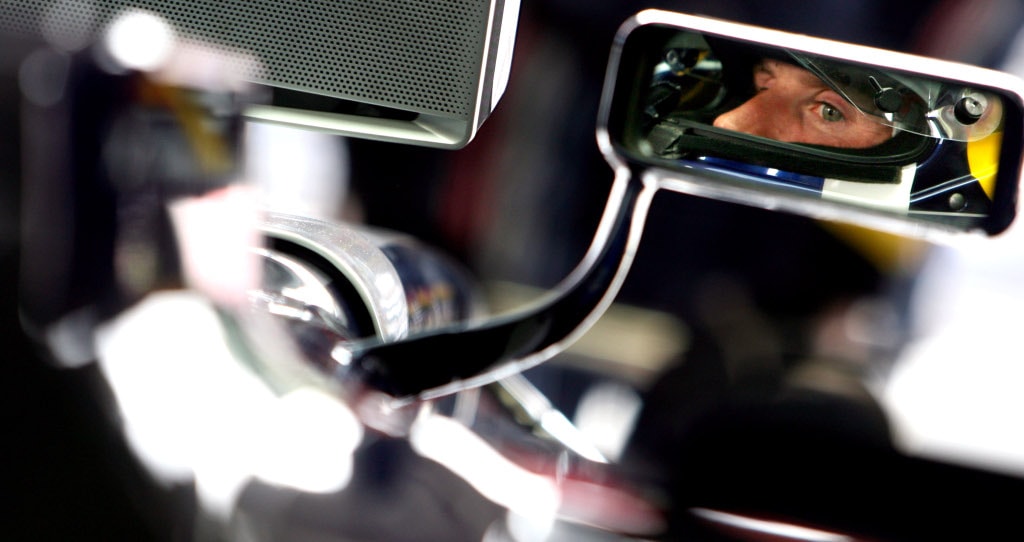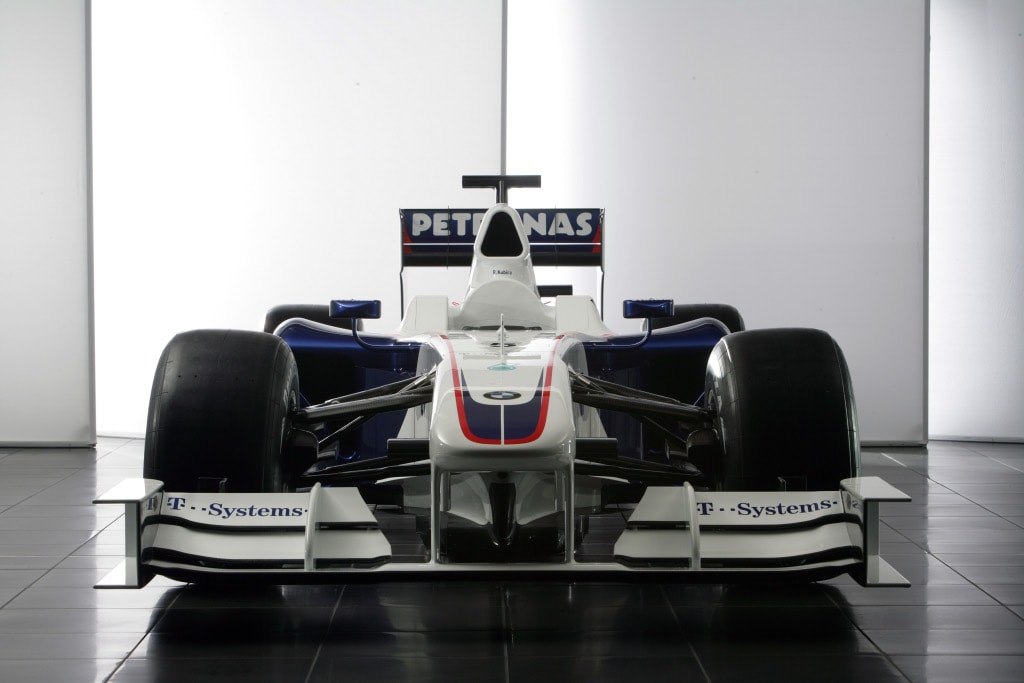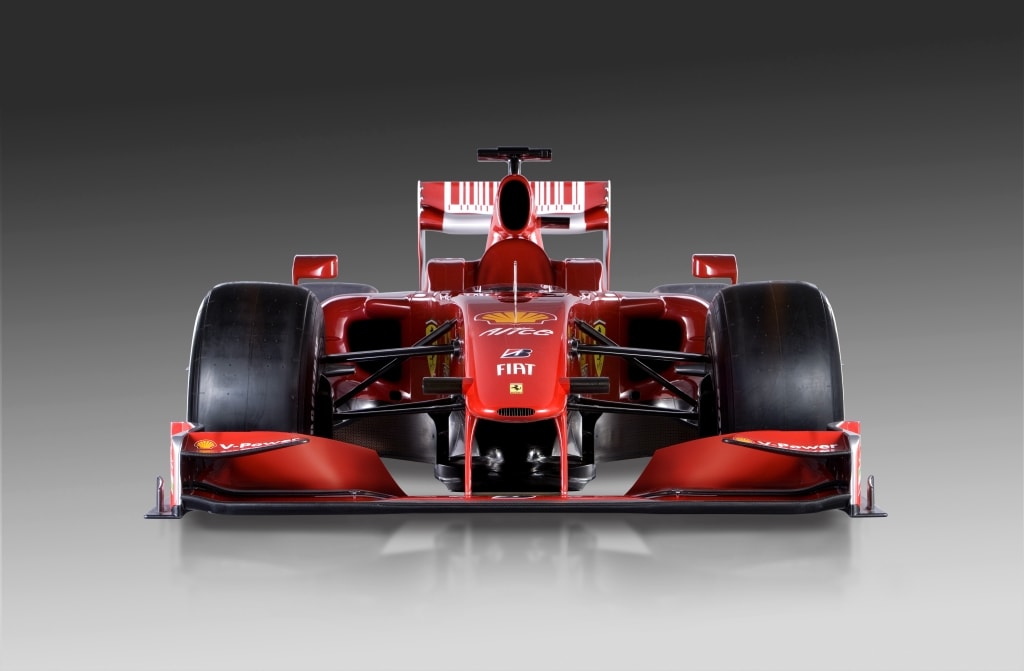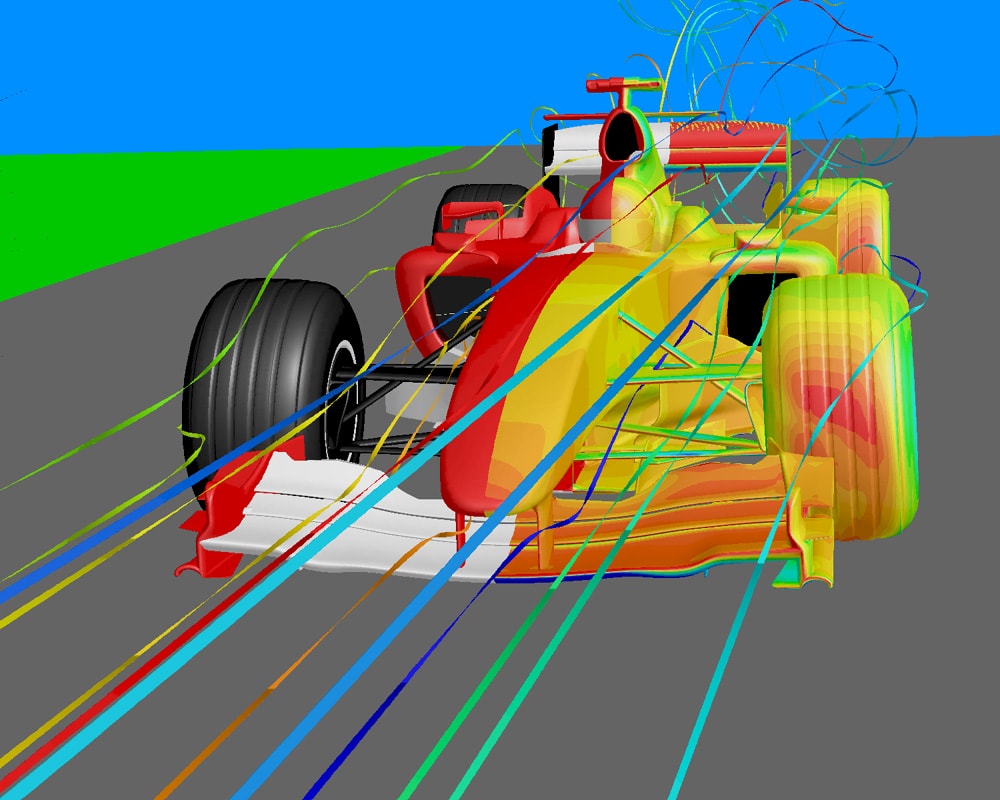We all know that every single detail on a modern Formula One car has to do with aerodynamics nowadays. And that's the logical progression of the policy introduced by the International Automobile Federation (FIA) regarding engine development inside the series. Once the teams were not allowed to further increase their engines' performances, it was only natural for the engineers and designers to start focusing on other ways to improve the car's capabilities while on track.
But that's basic information for every racing enthusiast out there. Once you have engines carrying the same level of performance – more or less – within the Formula One teams, working on the car's aerodynamics suddenly becomes crucial. Consequently, every single component of an F1 car – and there are around 20,000 pieces that puzzle up to form what we now call an F1 machine – bears a significant importance in terms of overall performance.
So today we're going to focus on mirrors. Road-car speaking, these are the sine-qua-non components of a regular car. From a Formula One standpoint however, the engineers would rather prefer their car to lack them. And that's because they get in the way of a perfectly shaped airflow around the car, meant to improve the traveling at speeds exceeding 200 mph in straight line.
However, as in the road car business, mirrors are mandatory in Formula One also, as they provide the driver with the best knowledge of what's happening behind him. And since we're talking about the FIA's mandatory rules, here's how the rulebook looks like in the mirror segment.
“All cars must have at least two mirrors mounted so that the driver has visibility to the rear and both sides of the car. The reflective surface of each mirror must be at least 150mm wide, this being maintained over a height of at least 50mm. Additionally, each corner may have a radius no greater than 10mm.”
“No part of the reflective surface may be less than 250mm from the car centre line or more than 750mm from the rear of the cockpit entry template.”
Although you may have heard that F1 teams usually find some loopholes in the rulebook and can therefore “legally cheat” their way into designing a more performing single-seater, the thing about mirrors is that no one can go round them. And that's because the rules are very clear regarding their position in relation with the chassis.
Moreover, before each season or even race, the FIA delegate comes to each team and does a practical test to make sure that the mirrors are “functional.” To be more precise, one of the official race drivers of the team is placed inside the cockpit and asked to “identify any letter or number, 150mm high and 100mm wide, placed anywhere on boards behind the car.” The distance from the objects to the car must be of no more than 10 meters from its rear axle line.
So there is practically little room for the designers to work. What they can do is shape the mirrors in such a way that the aerodynamic drawbacks are reduced. As we've showed you in some of our previous articles, that's where computational fluid dynamics (CFD) and wind tunnel work comes to play. After the scale model of the car is placed inside the wind tunnel, the designers and engineers gather the necessary information regarding airflow around the car and make the necessary adjustments until they obtain the best compromise. Usually, the results lead to a shell-shaped design, which is not actually rocket science (most of you know that air flows more rapidly around round objects, rather than sharp ones).
Additionally, the mounting of the mirrors present the engineers with another piece of difficulty. As the regular F1 car weights a little over 600 kg (driver and fuel included), we can all concur that every component, as light as it may be, has a direct influence on the car's center of gravity. With the mirrors having to be placed in the upper part of the chassis, that will consequently raise the machine's center of gravity, even if by a little. To tackle that problem, the designers are currently using lightweight materials to fabricate the mirrors, namely carbon fiber (for the mirror shell and its stem).
As far as the actual surface of the mirror goes, the teams go with Perspex (transparent plastic used as a substitute for glass, preferred by the F1 teams for its greater strength and durability). In addition to the usual mirrors one can see attached to road cars, the ones in Formula One benefit from strengthened mountings to the shell in order to tackle vibration problems. Needless to say, when talking about the high speeds at which the mirrors meet the air flow, vibration is inevitable. Therefore, these anti-vibration mountings ensure that the driver will stay in contact with what's happening behind him at any time via a non-blurry view.
Another thing that most of you might not know about is that the mirrors are usually re-fitted to the car from race to race. And that's because the driver's view of the front wheels suddenly becomes more important if we talk about street-circuit races.
Obviously, when on a classic circuit, the drivers can easily assume how to position their car in corners. And that's because even if they don't get it right, all is not lost. The car will eventually climb the kerbs and that will be it. When on street circuits however, there can only be little room for mistake. Consequently, the driver needs to know exactly when to turn in order to make a clean entry into a turn or a chicane, as the slightest mistake can throw their car into the barriers. Which brings us to mirrors and how they're positioned on the car.
Basically, what we're saying is that the mirrors will be fit differently in order for the driver to get a better view of the front wheels. Furthermore, the change has to be done within the FIA rulebook and without compromising the car's aerodynamics.
In addition, the driver has a limited power to make adjustments to the mirror during the race. Not that he needs to anyway, as the mechanics make sure all the necessary adjustments are made before the car even debuts on a given track. In order for the driver to have an even more accurate view of what's going on behind him, some teams have installed double-faceted mirrors that further widen the rear view. The system was first implemented in the series by McLaren Mercedes – on their MP4-17 – and resembles the one used in the road car segment for the nowadays blind-spot mirrors.
But that's basic information for every racing enthusiast out there. Once you have engines carrying the same level of performance – more or less – within the Formula One teams, working on the car's aerodynamics suddenly becomes crucial. Consequently, every single component of an F1 car – and there are around 20,000 pieces that puzzle up to form what we now call an F1 machine – bears a significant importance in terms of overall performance.
So today we're going to focus on mirrors. Road-car speaking, these are the sine-qua-non components of a regular car. From a Formula One standpoint however, the engineers would rather prefer their car to lack them. And that's because they get in the way of a perfectly shaped airflow around the car, meant to improve the traveling at speeds exceeding 200 mph in straight line.
However, as in the road car business, mirrors are mandatory in Formula One also, as they provide the driver with the best knowledge of what's happening behind him. And since we're talking about the FIA's mandatory rules, here's how the rulebook looks like in the mirror segment.
“All cars must have at least two mirrors mounted so that the driver has visibility to the rear and both sides of the car. The reflective surface of each mirror must be at least 150mm wide, this being maintained over a height of at least 50mm. Additionally, each corner may have a radius no greater than 10mm.”
“No part of the reflective surface may be less than 250mm from the car centre line or more than 750mm from the rear of the cockpit entry template.”
Although you may have heard that F1 teams usually find some loopholes in the rulebook and can therefore “legally cheat” their way into designing a more performing single-seater, the thing about mirrors is that no one can go round them. And that's because the rules are very clear regarding their position in relation with the chassis.
Moreover, before each season or even race, the FIA delegate comes to each team and does a practical test to make sure that the mirrors are “functional.” To be more precise, one of the official race drivers of the team is placed inside the cockpit and asked to “identify any letter or number, 150mm high and 100mm wide, placed anywhere on boards behind the car.” The distance from the objects to the car must be of no more than 10 meters from its rear axle line.
So there is practically little room for the designers to work. What they can do is shape the mirrors in such a way that the aerodynamic drawbacks are reduced. As we've showed you in some of our previous articles, that's where computational fluid dynamics (CFD) and wind tunnel work comes to play. After the scale model of the car is placed inside the wind tunnel, the designers and engineers gather the necessary information regarding airflow around the car and make the necessary adjustments until they obtain the best compromise. Usually, the results lead to a shell-shaped design, which is not actually rocket science (most of you know that air flows more rapidly around round objects, rather than sharp ones).
Additionally, the mounting of the mirrors present the engineers with another piece of difficulty. As the regular F1 car weights a little over 600 kg (driver and fuel included), we can all concur that every component, as light as it may be, has a direct influence on the car's center of gravity. With the mirrors having to be placed in the upper part of the chassis, that will consequently raise the machine's center of gravity, even if by a little. To tackle that problem, the designers are currently using lightweight materials to fabricate the mirrors, namely carbon fiber (for the mirror shell and its stem).
As far as the actual surface of the mirror goes, the teams go with Perspex (transparent plastic used as a substitute for glass, preferred by the F1 teams for its greater strength and durability). In addition to the usual mirrors one can see attached to road cars, the ones in Formula One benefit from strengthened mountings to the shell in order to tackle vibration problems. Needless to say, when talking about the high speeds at which the mirrors meet the air flow, vibration is inevitable. Therefore, these anti-vibration mountings ensure that the driver will stay in contact with what's happening behind him at any time via a non-blurry view.
Another thing that most of you might not know about is that the mirrors are usually re-fitted to the car from race to race. And that's because the driver's view of the front wheels suddenly becomes more important if we talk about street-circuit races.
Obviously, when on a classic circuit, the drivers can easily assume how to position their car in corners. And that's because even if they don't get it right, all is not lost. The car will eventually climb the kerbs and that will be it. When on street circuits however, there can only be little room for mistake. Consequently, the driver needs to know exactly when to turn in order to make a clean entry into a turn or a chicane, as the slightest mistake can throw their car into the barriers. Which brings us to mirrors and how they're positioned on the car.
Basically, what we're saying is that the mirrors will be fit differently in order for the driver to get a better view of the front wheels. Furthermore, the change has to be done within the FIA rulebook and without compromising the car's aerodynamics.
In addition, the driver has a limited power to make adjustments to the mirror during the race. Not that he needs to anyway, as the mechanics make sure all the necessary adjustments are made before the car even debuts on a given track. In order for the driver to have an even more accurate view of what's going on behind him, some teams have installed double-faceted mirrors that further widen the rear view. The system was first implemented in the series by McLaren Mercedes – on their MP4-17 – and resembles the one used in the road car segment for the nowadays blind-spot mirrors.



